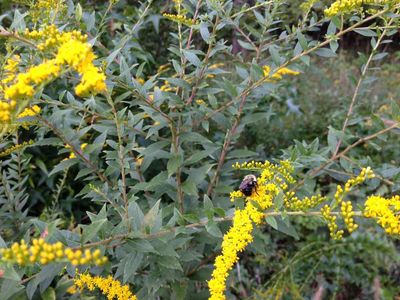Rough Goldenrod Information
Goldenrod is native to many parts of the U.S. and is easily identifiable as a bright, golden yellow clump of flowers so characteristic to fields and meadows in fall. These perennial flowers grow to a height of 2 to 5 feet (61 cm. to 1.5 m.). The flowers are yellow and small but grow in large clusters, blooming between August and September. The leaves of rough goldenrod, sometimes called wrinkled goldenrod, are toothed, deeply veined, and rough in texture. There is no question that this is a pretty flower to have in any wildflower garden, meadow, or native plant bed. It also attracts bees, butterflies, and birds. However, all types of goldenrod have gotten a bad rap during hay fever season. It has been blamed for these allergies, but unfairly. It is ragweed, which just happens to produce pollen while goldenrod is blooming, that causes the allergic symptoms. If you use wrinkled goldenrod plants in your garden and have no ragweed in the area, you won’t have the usual allergies.
Growing Rough Goldenrod in the Garden
As a native, perennial wildflower, rough goldenrod care is not labor intensive. Give it a spot in full sun, or a spot with a little shade, and with well-drained soil. The soil should be moist much of the time, but goldenrod will tolerate dry soil. Once your plants are established, you shouldn’t need to water them often. To propagate rough goldenrod, you can sow seeds right in the soil, but be heavy-handed, as germination is spotty. You can also take cuttings in late spring or early summer or divide the roots in late winter. Divide to propagate or just to thin out clumps for the coming growing season. If collecting seeds from your plants, look for the thicker seeds; flat seeds are not usually viable.
